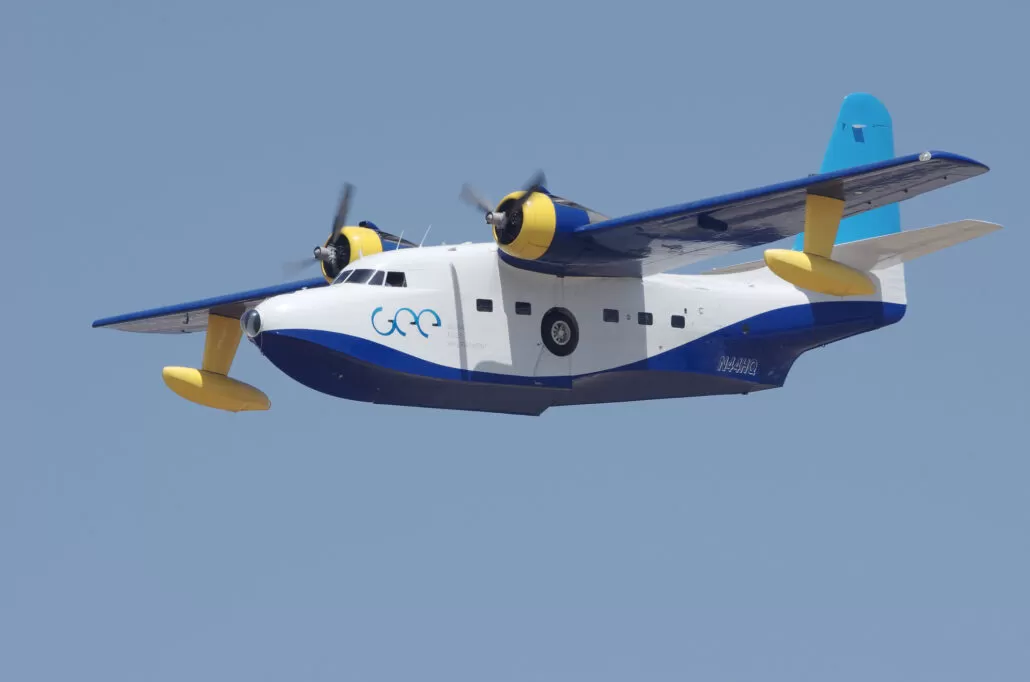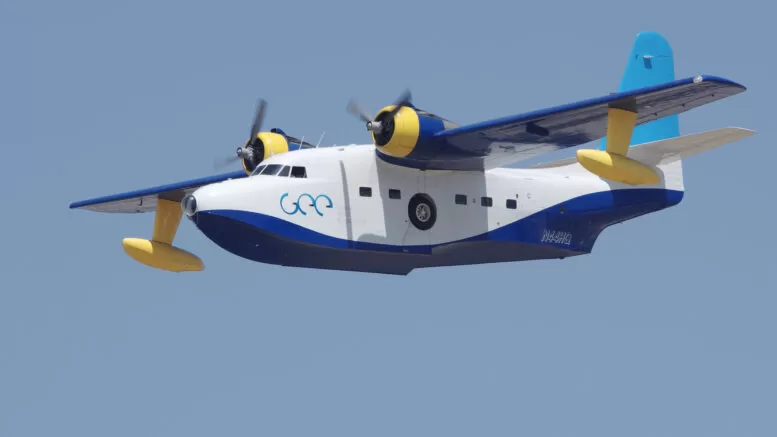The Grumman HU-16 Albatross airplane was an amphibious aircraft designed and used for military and civilian operations. It debuted in 1947 and easily integrated with fleets around the world. Not only could it handle land and water missions, but its cabin was versatile, too. There is no denying that it played a major role in aviation history. Today you can find the albatross airplane in aviation museums.
Many different types of aircraft have been manufactured over the years, but it is tough to find one that is capable of landing on turbulent open seas, performing rescue missions in extreme conditions, and traveling long distances with great efficiency. Until you discover the Grumman HU-16 Albatross or, as it is more commonly known, albatross airplane.
Decades ago, this amphibious aircraft was built with versatility in mind and quickly became an essential part of military, rescue, and civil operations.
Modern aviation has since moved on, but you don’t want to dismiss the historical significance and lasting impact. This article dives into the history of the albatross airplane and how it revolutionized long-distance flight with efficiency.

The Dawn of the Albatross Airplane
The albatross airplane first debuted in the mid-1940s, when the U.S. military requested an aircraft that could operate on both land and water. The Grumman Aircraft Engineering Corporation was already producing amphibious aircraft, so it began developing what would later be known as the albatross.
Its first flight was on October 24, 1947.
Because of its rugged capabilities, the U.S. Navy, U.S. Air Force, and U.S. Coast Guard added the albatross airplane to their fleets. The aircraft spent decades handling anything that came up, including combat, search-and-rescue missions, transport, and humanitarian aid.
Believe it or not, some went on to become a passenger airliner serving remote or island destinations.
Unique Design Features
The innovative design of this aircraft is what has allowed it to handle such a wide variety of roles throughout history, dabbling in both land and water. Here are a few of the characteristics that set the albatross airplane apart from conventional aircraft.
Amphibious Capabilities
This aircraft is designed with tricycle landing gear that allows it to land firmly on the ground. Its deep-V hull, along with a reinforced keel, allows it to land smoothly on open water. The ability to transition seamlessly between these makes it valuable in search-and-rescue missions and areas where traditional landing strips aren’t available.
Deep-V Hull and Extended Keel
When it comes to its design, the deep-V hull was added to create more stability for landing on the water while also protecting the aircraft from any water damage. It can handle 4-foot waves — or up to 10-foot waves with a jet-assisted takeoff.
The extended keel under the fuselage also adds additional support while in the water.
Engine Performance
A jet that was going to be able to pull off important tasks needed to be backed by powerful engine performance. And so it was. The albatross airplane was designed with two Wright R-1820-76A nine-cylinder radial engines, delivering a combined 2,850 horsepower.
This allowed it to reach top speeds of over 200 mph with a range of 1,650 miles— perfect for reaching transoceanic destinations.
Versatile Interior Cabin
When manufacturing began, the idea was for the albatross airplane to be an effective solution in all sorts of scenarios. Not only does this refer to its amphibious ability, but also the flexible layout of the cabin.
Therefore, it was designed to be adaptable. It could have passenger seating and be adjusted for medical situations requiring stretchers. It could also carry equipment and cargo when necessary.
In all ways, the albatross airplane met the need in any situation.
The Albatross Airplane Throughout History
The entire time the albatross airplane was in service, it played very important roles for those in the military — and for civilians, too. Remember, they were able to safely make their way in and out of sticky situations much easier than any other aircraft. Whatever the mission was, the albatross airplane could tackle it.
Military Use Throughout History
The United States Air Force, Navy, and Coast Guard have all made use of the albatross airplane.
The Air Force regularly utilized it for combat search and rescue missions, especially in the Korean War and Vietnam War. Its ability to rescue troops from the water made it a lifesaving aircraft. At the same time, the Navy and Coast Guard found it to be crucial for maritime patrol, reconnaissance, and various missions. They would rescue sailors and humanitarian aid workers, as well as protect our shores from any threats.
Other countries also began integrating the albatross airplane into their fleets, too.
Private Use
Believe it or not, when this aircraft was no longer needed by the military, it was used by civilians. They worked beautifully for transporting cargo. Yet others were transformed into luxury jets for passengers. Because of their design, they have always been appealing to those who are traveling to remote or risky areas, regardless of the reason.
A Timeless Airplane
While the albatross airplane may no longer be in service, it leaves behind a legacy that is worthy of talking about. And it is not unusual to find these jets housed in aviation museums throughout the country. This ensures that generations to come will all understand the special place it holds in aviation history.
Experience All Things Aviation
Do you have an interest in aviation history? Would you love the opportunity to see aircraft in action? Want to hear stories of war veterans who had personal encounters with albatross airplanes? Then you need to mark your calendar for the Wings Over Camarillo Air Show on August 16th and 17th, 2025.
Don’t miss this event.
Conclusion
The albatross airplane is still talked about today as a beacon in history designed to operate in the most challenging environments. As an amphibious aircraft with powerful engines and versatile cabins, it made an impact on those in the military and those who were not.
Now, it serves in its rightful place— museums around the country.
Ready to Soar with Us?

